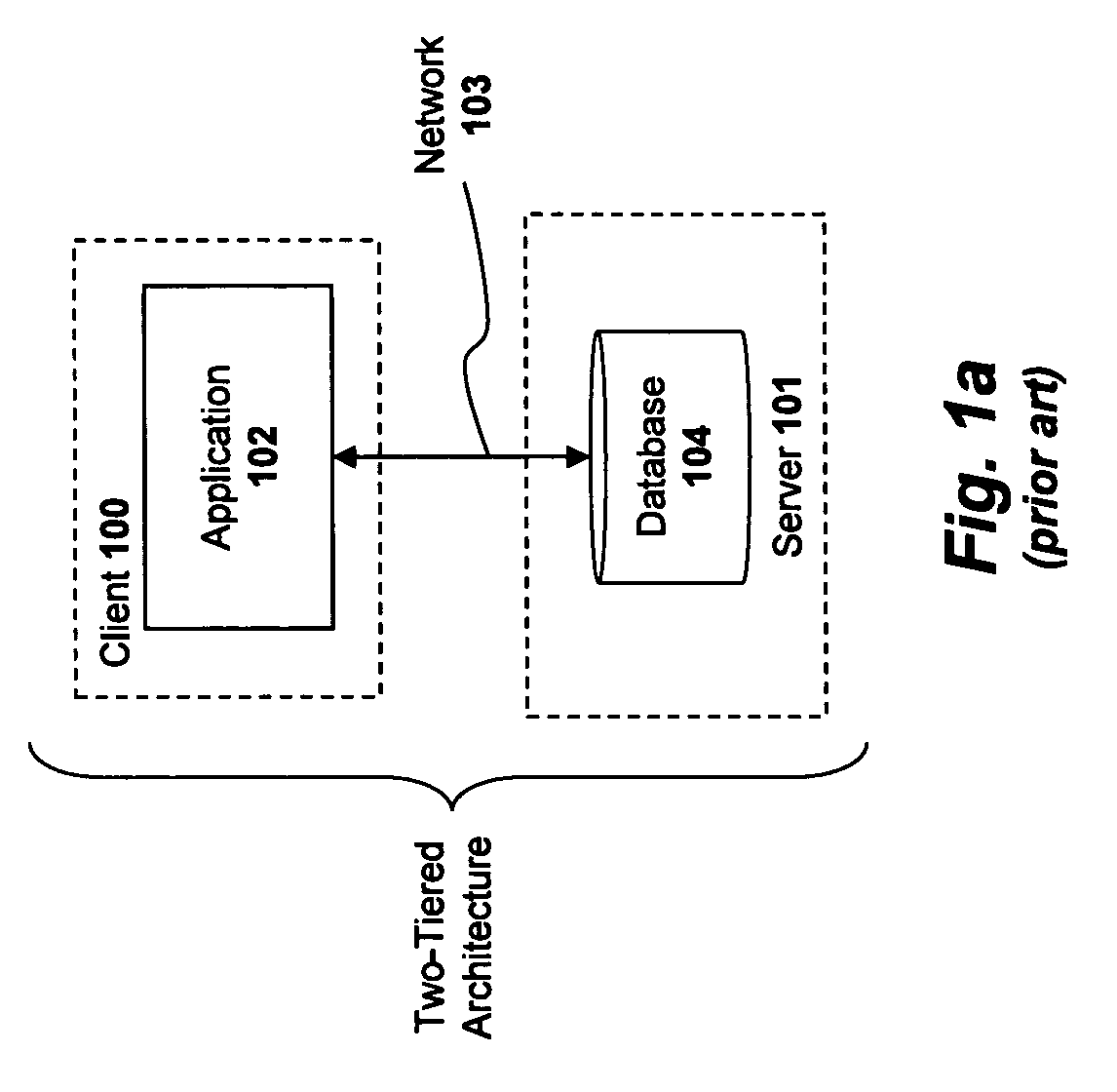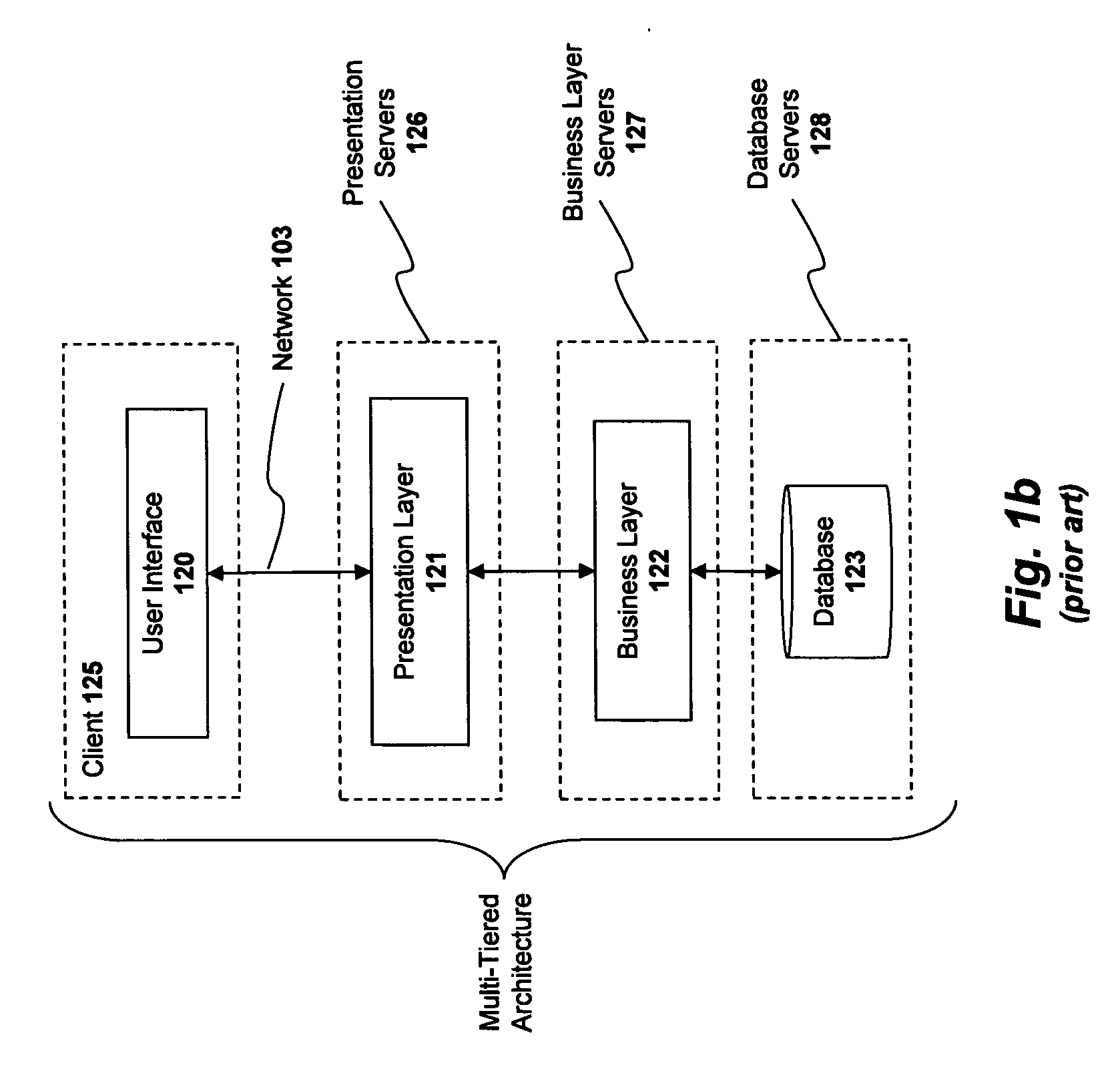System and method for measuring memory consumption differences between objects within an object-oriented programming environment
a programming environment and object-oriented technology, applied in the field of data processing systems, can solve the problems of brittle client-side code, limited two-tiered architecture, and difficult task of installing and maintaining up-to-date client-side applications on a large number of different clients
- Summary
- Abstract
- Description
- Claims
- Application Information
AI Technical Summary
Problems solved by technology
Method used
Image
Examples
Embodiment Construction
[0031]Described below is a system and method for processing object graphs. Throughout the description, for the purposes of explanation, numerous specific details are set forth in order to provide a thorough understanding of the present invention. It will be apparent, however, to one skilled in the art that the present invention may be practiced without some of these specific details. In other instances, well-known structures and devices are shown in block diagram form to avoid obscuring the underlying principles of the present invention.
A. System and Method for Processing Object Graphs
[0032]FIG. 3 illustrates an exemplary network of objects 300-305 which will be used to describe the various embodiments of the invention. Each of the objects may contain different types of data and methods. In the illustrated example, object 300 references objects 301 and 302. For example, object 300 points to objects 301 and 302 (e.g., object 300 may include object 301, 302 instances as its properties...
PUM
 Login to View More
Login to View More Abstract
Description
Claims
Application Information
 Login to View More
Login to View More - R&D
- Intellectual Property
- Life Sciences
- Materials
- Tech Scout
- Unparalleled Data Quality
- Higher Quality Content
- 60% Fewer Hallucinations
Browse by: Latest US Patents, China's latest patents, Technical Efficacy Thesaurus, Application Domain, Technology Topic, Popular Technical Reports.
© 2025 PatSnap. All rights reserved.Legal|Privacy policy|Modern Slavery Act Transparency Statement|Sitemap|About US| Contact US: help@patsnap.com



